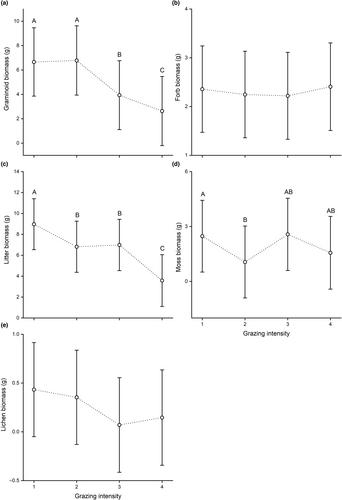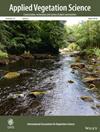Intensity-dependent effects of cattle and sheep grazing in sand grasslands — Does livestock type really matter?
Abstract
Aims
By analysing cattle- and sheep-grazed sand grasslands, we tested the following hypotheses: (i) livestock type has a stronger effect on the vegetation characteristics than grazing intensity; (ii) sheep grazing results in lower biomass and species and functional diversity than cattle grazing, regardless of intensity; and (iii) increased grazing intensity causes a shift of the trait composition in grasslands.
Location
Sand grasslands in the Nyírség region, East Hungary.
Methods
We selected 26 sand grassland sites grazed by cattle or sheep and classified them into four intensity levels. Vegetation composition was surveyed in 2 m × 2 m plots. We harvested the above-ground biomass from 20 cm × 20 cm plots; then dried and sorted it to live biomass, litter, moss, and lichen. We compared Rao dissimilarity index, species richness, Shannon diversity, evenness, and the community-weighted means of nine vegetative and generative traits along a grazing intensity gradient. We calculated functional richness, evenness, and divergence for comparison.
Results
We found that some diversity metrics and community-weighted means of most studied traits were significantly affected by grazing intensity. Several characteristics were also affected by the interaction of grazing intensity and livestock type, but none of the studied characteristics was affected by livestock type in itself. Increasing Rao dissimilarity index peaking at the fourth grazing intensity level was detected, but for other multitrait indices, no such changes were proven, except for functional divergence, which was the lowest at the first intensity level. Graminoid, forb, and litter biomass were significantly affected by intensity, but none of the biomass fractions was affected by livestock type.
Conclusions
We suggest that for the management of sand grasslands, grazing intensity should be carefully adjusted, considering not only livestock units per hectare. For practical recommendations, well-defined, long-term experiments studying different livestock and habitat types along an intensity gradient would be essential.


 求助内容:
求助内容: 应助结果提醒方式:
应助结果提醒方式:


